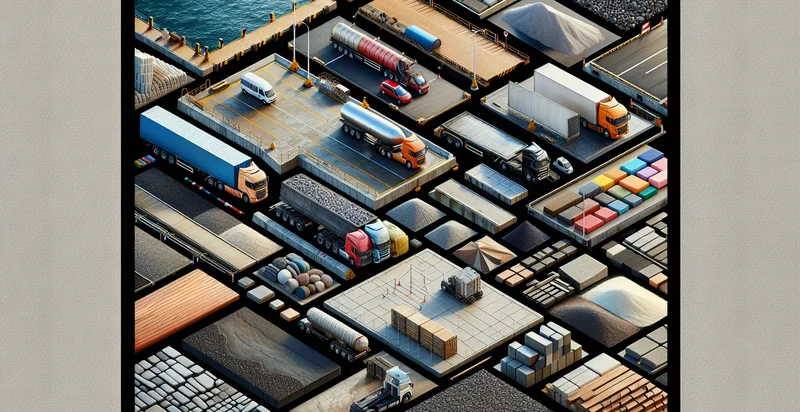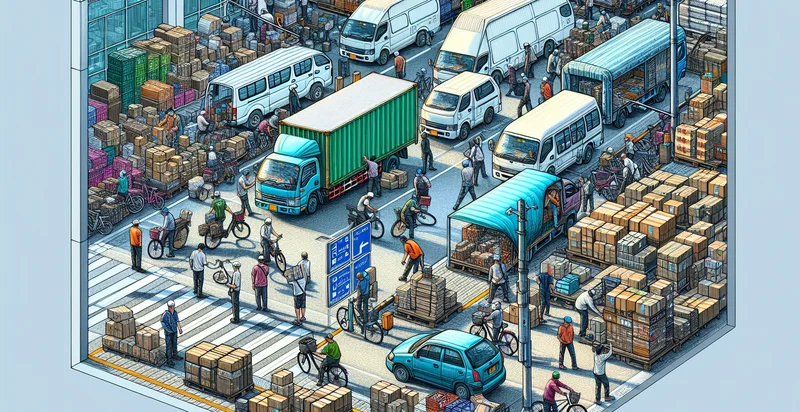Identify unloading surface types
using AI
Below is a free classifier to identify unloading surface types. Just upload your image, and our AI will predict what type of unloading surface it is - in just seconds.

Contact us for API access
Or, use Nyckel to build highly-accurate custom classifiers in just minutes. No PhD required.
Get started
import nyckel
credentials = nyckel.Credentials("YOUR_CLIENT_ID", "YOUR_CLIENT_SECRET")
nyckel.invoke("unloading-surface-types", "your_image_url", credentials)
fetch('https://www.nyckel.com/v1/functions/unloading-surface-types/invoke', {
method: 'POST',
headers: {
'Authorization': 'Bearer ' + 'YOUR_BEARER_TOKEN',
'Content-Type': 'application/json',
},
body: JSON.stringify(
{"data": "your_image_url"}
)
})
.then(response => response.json())
.then(data => console.log(data));
curl -X POST \
-H "Content-Type: application/json" \
-H "Authorization: Bearer YOUR_BEARER_TOKEN" \
-d '{"data": "your_image_url"}' \
https://www.nyckel.com/v1/functions/unloading-surface-types/invoke
How this classifier works
To start, upload your image. Our AI tool will then predict what type of unloading surface it is.
This pretrained image model uses a Nyckel-created dataset and has 31 labels, including Aggregate, Asphalt, Brick, Clay, Cobblestone, Compressed Gravel, Concrete, Crushed Stone, Dirt and Exposed Aggregate.
We'll also show a confidence score (the higher the number, the more confident the AI model is around what type of unloading surface it is).
Whether you're just curious or building unloading surface types detection into your application, we hope our classifier proves helpful.
Related Classifiers
Need to identify unloading surface types at scale?
Get API or Zapier access to this classifier for free. It's perfect for:
- Warehouse Efficiency Optimization: This function can be employed to identify different unloading surface types in warehouses, enabling better resource allocation for material handling equipment. By understanding the surface conditions, businesses can optimize loading and unloading processes, reducing time and labor costs.
- Logistics Route Planning: During the planning phase of logistics, the unloading surface types identifier can be used to determine the most suitable routes for delivery trucks. By avoiding areas with unsuitable unloading surfaces, companies can minimize vehicle damage and improve delivery efficiency.
- Construction Site Assessment: Construction companies can utilize this function to classify unloading surfaces at job sites before beginning operations. By identifying surface types, firms can make informed decisions about equipment needed, ensuring safety and productivity.
- Retail Space Management: Retailers can leverage the unloading surface types identifier to optimize their receiving areas. By understanding the conditions of unloading surfaces, they can determine the best layout for efficient merchandise movement and minimize the risk of product damage.
- Environmental Impact Analysis: The function can assist in evaluating unloading surfaces from an environmental perspective. It helps organizations assess potential runoff and ecological effects associated with specific surface types, leading to more sustainable operational practices.
- Inventory Control Systems: Businesses can integrate this identifier into their inventory management systems to track where different products are unloaded. This data helps in managing stock levels more accurately by correlating unloading conditions with product performance.
- Training and Safety Protocols: Companies can use the unloading surface types identifier to develop targeted training materials for staff on safe unloading practices. By highlighting the risks associated with various surface types, organizations can enhance safety protocols and reduce workplace accidents.


